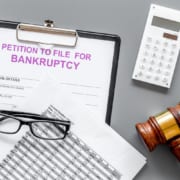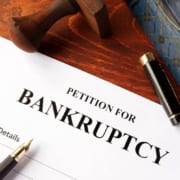How Do I Go Bankrupt?
There are two main types of bankruptcy, voluntary and involuntary.
Voluntary Bankruptcy
Also known as a ‘Debtor’s Petition’, voluntary bankruptcy is when you yourself lodge an application along with your financial statements to the authorities in order to be declared bankrupt. This could be initiated when you are unable to pay your debts and your creditors are not willing to negotiate.
In order to be awarded voluntarily bankrupt, you need to lodge a debtor’s petition along with a statement of affairs. Also, you need to keep in mind that once an application is lodged it cannot be withdrawn on any condition. The Australian Financial Security Authority (AFSA) will then process the lodged application and make a decision, usually, within 24 to 48 hours. If the AFSA accepts the application, you would be declared bankrupt and a trustee would be appointed to manage your bankruptcy.
Involuntary Bankruptcy
Also called ‘Creditor’s Petition’, an involuntary bankruptcy occurs when a creditor applies to the federal court to have you declared bankrupt. The creditor or a group of creditors would need to apply for a bankruptcy notice and serve it on you, thereby demanding you to pay them their owed amounts within 21 days. If within this time you are not able to pay the creditor, you would be judged to have committed an act of bankruptcy and the creditor would therefore lodge a creditor’s petition to the court. A trustee would then be appointed to manage your bankruptcy and you would be required to file a statement of affairs with the AFSA.
The trustee would be in charge of all your properties and can investigate all your financial dealings. The trustee can, in order to pay creditors, sell some of your assets and have the authority to take part of your income if it is over a certain limit.












Leave a Reply
Want to join the discussion?Feel free to contribute!